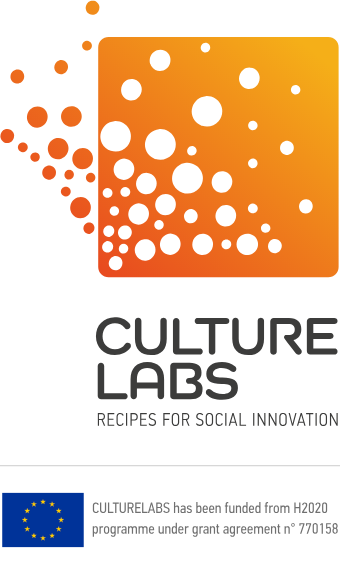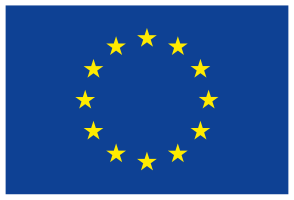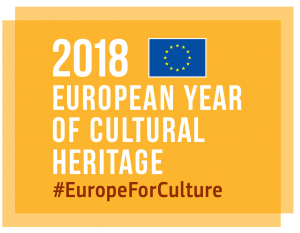Several museums in Finland have organised activities and participatory projects involving migrants or asylum seekers during the recent years. One of the biggest initiatives has been a project called “Museum as an Asylum” coordinated by the Helinä Rautavaara ethnographic museum based in Espoo, Finland.
Altogether 15 museums all around Finland partnered in the project between 2016 and 2018. The objective of the project was to provide activities for and improve the well-being of asylum seekers under 25 years old and their families. In the second stage migrant youth who were not asylum seekers were also involved. Almost 10.000 people took part in the project activities.
The museums organised guided tours in the museums, various types of arts, sports and creative workshops were organised, where the participants could make handicrafts and art works using different types of techniques. Several exhibitions and events were organised in collaboration with migrants.
Many museums planned and implemented activities based on the wishes of the participants. At Sagalunds Museum female participants made an initiative to organise a Syrian wedding themed party event, which became an effective way of reflecting the differences and similarities between the Syrian and Finnish cultures. Also Helinä Rautavaara museum has experience of several participatory projects related to annual festivals and lifecycle celebrations. The museum considers them to provide a fruitful context for projects, as they are occasions that bring people together while involving several social, cultural and religious facets that relate to key aspects of cultures and their change in general.
Tampere museum collections, Cultural education unit TAITE and Postal Museum also implemented a project @Tampere#home? during 2016-2017, that involved photography with asylum seekers. The asylum seekers documented their everyday life, celebrations, people, nature and important moments, and a photographic exhibition “Not just a piece of paper” was created in a participatory manner in the end of the project. The participants considered it important that the museum was not pushing its own agenda in the project, but it involved genuine interaction and listening. The message of the exhibition was to maintain hope through encouraging to see the shared humanity. Humour was also an important aspect in bringing people together. It unites and helps to find joy in the midst of difficulties – it is a part of being a human.
Good practices for CultureLabs
In the Museum as Asylum project what was planned in many cases differed from what was realised. Working with asylum seekers requires flexibility and readiness to constantly assess the needs of the participants and to change plans as the project progresses. Understanding and flexibility from the side of the funding organisation is appreciated in these situations. When the number of the participants at the museums was low, the reasons were examined and solutions such as change of timing or increased collaboration with the staff of the reception centres were sought after. The museum staff also organised activities in the reception centres. New collaborators such as schools and NGOs were contacted as the project evolved. Some asylum seekers were also employed as guides and in other roles during the project.
The cooperation between the museums and NGOs were seen as fruitful, as the museums could provide their contents and pedagogical expertise while the NGOs had experience of handling relevant social issues or discussing with the families of underaged participants. Museums were seen as a good collaborators, as they were considered neutral.
Several museums developed visual tools to facilitate communication. For example emojis are well-known symbols globally and young people use them a lot, as was discovered by Aboa Vetus & Ars Nova. Technology can be used creatively, like the participants at Aine Art Museum, who created videos using the photos saved on their phones or the participants of an art workshop at Serlachius Museums, who explained contexts and meanings of their paintings by showing photos of their home countries from their phones.
When organising art workshops with migrants, it is important to bear in mind that ideas and conceptions of art vary in different cultures, as Helsinki Art Museum pointed out after the project. All in all, the museum exhibitions were seen to provide constructive contexts and places for intercultural dialogue. The project coordinator Riika Huitti-Malka writes about the meaning of culture to people: “in the most difficult situations, culture may be the only thing that people have left. A visit to the museum can save the day, or even the whole life”.
The publication of the Museum as an Asylum project (in Finnish) will be added as an ingredient on the CultureLabs platform. You can download the publication through this link: http://helinamuseo.fi/wp-content/uploads/2016/02/turvapaikkanamuseo.pdf






Its like you read my mind! You appear to know so much about this, like you wrote the book in it or something. I think that you can do with a few pics to drive the message home a bit, but other than that, this is wonderful blog. A great read. I’ll definitely be back.|
Hello, thank you for your comment. Our project developed a platform where you can find a lot of contents on this topic: best practices, guidelines and other materials. The link is recipes.culture-labs.eu